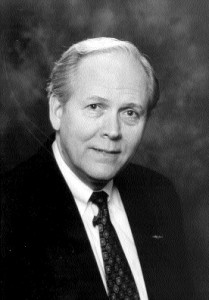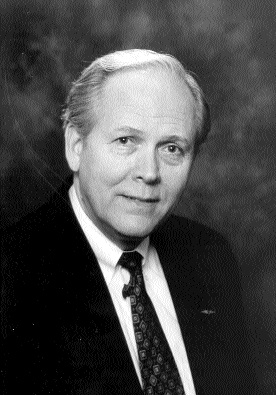By Jeff Price

Gary Green, airport manager for Colorado Springs Airport for the past 15 years, has announced his resignation, effective this May.
“I always told people, ‘If you can retire, you should,'” said Gary Green, the airport manager for Colorado Springs Airport for the past 15 years. So, taking his own advice, Green announced his resignation effective this May.
During his time at the airport, Green has seen a tremendous amount of capital improvement projects including the construction of a new $81 million dollar terminal building and a new runway. He has also seen airlines like WestPac come and go, and did his best to attract the highly elusive Southwest Airlines.
The airport staff numbered a mere 19 when Green arrived from Orlando, Fla., in 1988. Today he supervises a staff topping 116. The airport’s annual operating revenues reached nearly $23 million and recorded over 2.1 million passengers in 2002, up 1.2 percent from 2001.
Green had previously worked at the airport in Missoula, Mont., but felt it wasn’t large enough for that particular point in his career, so it was off to Orlando.
Green says the incentive to getting the job in Colorado came from a very strong source.
“We spent five years at Orlando International Airport and I had a great job there,” he said. “I really think the world of the airport but never really acclimated to Florida that much. So when I came up here to interview, my wife said, ‘If you don’t get the job, don’t come back.'”
Green confesses that the major attraction to coming here was to get back to the Rocky Mountains. Fortunately for Green he got the job, but he still jokes that if he were smart he’d still be in Missoula.
Colorado Springs Airport shares property with Peterson Air Force Base and sits on 7,135 acres of land with three runways, including the longest operational runway in Colorado at 13,500 feet. One of the higher profile issues that brought the airport and Green into the spotlight was the splash WestPac made back in the late 1990s.
Featuring airliners that resembled huge, colorful billboards, and a no-frills approach to flying passengers, WestPac promised a revival for low-cost air carriers. No sooner had the new terminal building been completed than WestPac showed up at Green’s door.
“We opened in October of 1994, then they came in April of 1995. That was a whirlwind ride,” says Green.
During WestPac’s stay (1995 to 1997), the airport went from 1.2 million annual boardings to 2.4 million boardings, then back down to 1.2 million again. Green thought the new terminal would be “as-is” for sometime, but WestPac had needs that had to be taken care of sooner than later, including the addition of restrooms, an elevator, additional bag claim devices and jet bridges.
“We had a lot of fun—and a lot of bittersweet memories,” Green says about the WestPac days. “Old Ed Beauvais (former chairman, president and CEO of WestPac) was such a fine guy, and it’s just a heartbreaker that the company didn’t make it.”
While WestPac moved to Denver International Airport in 1997, Green feels that the airline was already heading downhill and that the move only accelerated its collapse.
“There wasn’t any hope, at least in my mind,” he said. “I didn’t think they had a chance at all to survive. Moving to Denver just hastened the demise a little bit.”
Green thought about the situation repeatedly, and changed his mind about the reasons for WestPac’s failure many times.
“If Ed had asked me I would have said, ‘Slow down a little bit.’ I think they went a little too fast, but you never know; they’re philosophy was they had to get…those other stations out there to start feeding the hub, and it just didn’t get fed fast enough,” he said.
Green also believes the WestPac board should have let Beauvais try to turn things around.
“I think the death blow was when the board dismissed Ed,” he said.
WestPac moved to DIA in 1997, and closed up shop shortly after a failed merger attempt with Frontier Airlines.
Although WestPac made headlines, Green notes that the major challenges were the capital improvement programs.
The new midfield terminal complex and the new airport terminal were placed in an area that at the time was virgin prairie. Also, a portion of it was an old World War II landfill that the Army Air Corps had used, which also had to be cleaned up.
“All those things kind of kept us busy and out of mischief for quite awhile,” says Green.
Alan Wiechmann, director of the Airport District Office for the Federal Aviation Administration in Denver, said the airport grew and matured, becoming a major regional asset under Green’s leadership.
“In 1992, it became the first airport in the region to have simultaneous independent instrument arrival streams for air carrier aircraft,” he said. “Major projects like these are difficult to accomplish in today’s world. Gary leaves Colorado Springs and Colorado with a facility that can easily serve the needs over the next 50 years.”
The airlines provided additional obstacles to the new terminal building, but Green notes that they finally did come around.
“They didn’t want a new terminal, but the direction I was getting from downtown was ‘Get a new terminal’, so we had that hurdle to overcome, and that certainly was no easy thing to do,” Green said. “But we finally broke the inertia. Once you get started on a project like that, they’re all for it.”
Today, Colorado Springs Airport is home to 10 major airlines. In 1996, the FAA recognized Green for these accomplishments and the flawless safety record the airport maintained during the construction of the terminal building and runway, which the FAA says improved airport efficiency and passenger convenience.
In 2002, several carriers started new service at Colorado Springs, including Allegiant Air, which began nonstop flights to Las Vegas and same plane, one-stop service to Fresno, Calif., in February. In addition, SkyWest Airlines, a United Express carrier, began service in March to Los Angeles. Continental Express Airlines re-launched service in April to Houston, and Great Plain Airlines began service to Albuquerque in April. In December, America West Airlines upgraded two of its Phoenix nonstop flights from regional jets to two 737-300 series aircraft. On the same day, Comair, a Delta Connection carrier, reentered the Colorado Springs market with jet service to Cincinnati twice a day.
Completing and finally moving into the new terminal proved to be a minor rest stop for Green and his staff. There was still a ton of capital improvements including a lot of the taxiway construction.
“We’ve just been plowing ahead ever since,” said Green. “It’s been an ongoing deal.”
Another major issue Green faced was the pursuit of Southwest Airlines. However, Green is quick to point out that it wasn’t quite a chase so much as a reasonable business proposition—similar to many made to other airlines over the years.
“I think we made a reasonable professional approach to Southwest and we have stayed in touch with them,” he said.
However, Green feels that Southwest Airline’s business model doesn’t yet fit with the airport.
“They get people in there almost daily, visiting them, asking them to fly to their city,” he said. “It’s my belief that they’ve got a pretty solid business plan; they know what their plans are and there’s probably not a whole lot you can show them.”
Green believes he understands their thinking and has tried to avoid being pests to the airline. Southwest’s proven track record at other airports seems to be an indicator of the type of business model they use to evaluate whether to go into a new city. The trick is figuring out what that model is, and trying to fit into it.
“A lot of communities will get excited and they think that all they have to do is just call them up and say, ‘Gee, we’re nice guys; fly here.’ That’s just not the way it works,” declares Green.
Green feels that the airport has been responsible with regard to air service development by maintaining contact with Southwest and a number of other airlines.
“When we fit their model, that’s when they’ll be here,” he said.
Green also points out the success of getting existing airlines to stay and expand.
“I think Colorado Springs Airport is positioned now to compete with anybody in the country in our size range, and quite a few airports that are even bigger than us,” he said. “And I think I’m leaving the facility in good shape for somebody to come along, take the reigns, and take it to the next level.”
Travis Vallin, director of the State Division of Aeronautics, echoes those sentiments.
“Gary will be greatly missed because he was always supportive of the statewide system of airports in Colorado and how they all functioned together for the greater good,” Vallin said. “He also promoted the smaller airports through the use of surplus equipment that was no longer useful at Colorado Springs. Everyone at the Aeronautics Division and Colorado Aeronautical Board wishes him well.”
On another positive note for the airport, Moody’s Investors Service and Standard & Poor’s Ratings Services raised the bond rating for the airport to “A-3” and “A-,.”
According to an airport press release, this upgrade was based on improved financial condition, strong liquidity, healthy financial margins and prudent development policies.
The City of Colorado Springs plans to conduct a national search for a new director. Under the guidance of city council, city staff and a group of community leaders, it will begin an extensive selection process to locate the best possible candidates for consideration. The city hopes to have a new director in place by May 31 (Green’s last official day), but is prepared to appoint an interim director if necessary.
In addition to his time in Orlando and Missoula, Green, who hit 60 last October, directed and supervised operations and maintenance programs for Dallas Love Field and Redbird Airport (now Dallas Executive Airport). He is an accredited airport executive of the American Association of Airport Executives and has a bachelor of arts degree in industrial psychology from the University of Texas in Arlington.
A commercial rated multi-engine pilot, Green was recently elected to serve on the Colorado Airport Operator’s Association board and plans to continue in aviation in some capacity.
“Aviation is such a different thing,” he explains. “When you work at an airport, there’s something about it that kind of gets in your blood. Its not like working at manufacturing or processing; there’s just a lot of things that you can do to make a living, but when you become associated with aviation and particularly doing airport management it’s just different.”
Green says it’s mostly hard work.
“A lot of people not associated with it think, ‘Boy, what a glamour job,’ but when you’re in there doing it, it’s not that glamorous,” he said. “It’s just work, but it’s unique work and it’s work you like doing.”
Green also wants to be out of the public arena and pursue something with a lower profile.
“I’m certainly going to do some family stuff,” he said. “My son is graduating from high school in May, and my daughter is graduating from college in May, up at Washington State, so this summer we should have a little time to do something. If I want to, I can just get a rocking chair and rock; I don’t have to do anything.”
So what will he miss the most?
“Running an airport like this is big business and there’s just a lot of things that go on everyday; I might miss the level of activity,” he said. Green paused for a moment as he thought about that last statement, and then said, “But I’ll get used to it!”











